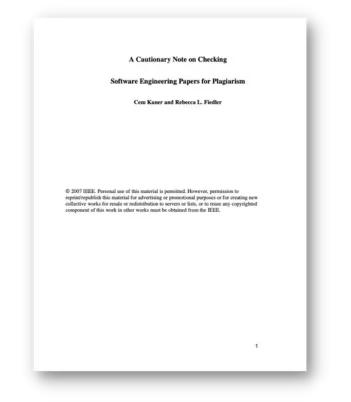In recent years, student plagiarism scandals have rocked higher education and brought unwanted attention to some universities. In the United States, The Chronicle of Higher Education [1] and other media outlets reported on plagiarism in Ohio University’s Mechanical Engineering program. In Australia, RMIT’s ‘mytutor’ case [2] exposed student cheating in the Computer Science department. Plagiarism problems aren’t limited to student authors, however. Both the ACM and IEEE Codes of Ethics appear to oppose plagiarism [3], yet both professional societies report an increase in plagiarism incidents. Professional society leaders, including IEEE’s Mintzer [4] and ACM Publications Board co-chairs Boisvert and Irwin [5], used columns in their journals to discuss the rise of plagiarism they see in submissions to their journals, and called on colleagues to adhere to the professional practice of proper citation of previous work. The ACM recently published the first ACM Policy and Procedures on Plagiarism [6] to clarify and codify their position on the matter.
How can academics, in their roles as authors, instructors, editors, and reviewers, enforce anti-plagiarism stances?

